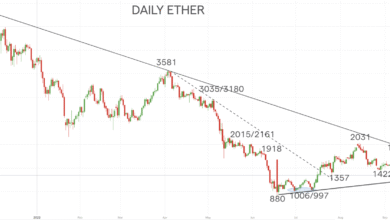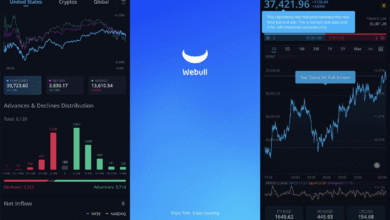Bitcoin Market Dynamics: Capital Flees Old Models
Bitcoin market dynamics are increasingly shaped by the evolving landscape of global finance, especially as institutions pivot away from traditional assets. As we navigate through rising yields in U.S. Treasuries and deepening debt anxieties, a notable shift is occurring in crypto investment strategies. The COO of MEXC, Tracy Jin, emphasizes how corporate adoption of Bitcoin is solidifying its role as a key player in institutional finance. With its neutral characteristics and liquidity, Bitcoin stands as a formidable counter to the turbulence in traditional markets. This transformative phase is not just about price predictions; it signals a broader capital flight from conventional risk models and a reallocation towards digital assets.
The fluctuations in the Bitcoin ecosystem reflect a significant departure from past investment patterns as established financial systems face unprecedented challenges. With central banks’ bond yields on the rise and uncertainty casting shadows over traditional portfolios, more investors are turning to cryptocurrencies. The ongoing turmoil prompted by geopolitical tensions and inflation concerns is steering capital away from traditional safe havens. MEXC’s perspective highlights how Bitcoin’s resilience serves as a critical alternative in the shifting dynamics of wealth management and asset allocation. As stakeholders reconsider their approaches, the fascinating interplay between digital currencies and conventional finance is set to reshape future economic landscapes.
The Strength of Bitcoin Amid Market Uncertainties
As global markets experience turbulence due to rising long-dated bond yields and fluctuating stock prices, bitcoin emerges as a beacon of stability. According to Tracy Jin, COO of MEXC, the currency displays a remarkable resilience, making it a preferred choice for investors seeking alternatives amidst financial chaos. This shift signals a growing recognition of bitcoin’s unique characteristics, such as its neutrality and liquidity, which are becoming increasingly attractive as traditional safe havens like U.S. Treasuries lose their lustre.
Investors today are looking for avenues that offer both security and potential for growth. Although traditional markets may be mired in uncertainty, cryptocurrency, particularly bitcoin, is positioning itself as a long-term asset. The ongoing capital flight from conventional finance towards cryptocurrencies highlights a changing landscape where institutional investors are seizing opportunities offered by the digital asset, further solidifying bitcoin’s role as a strong counterbalance in these unpredictable times.
Bitcoin Market Dynamics: Shifting the Investment Paradigm
The dynamics surrounding bitcoin have drastically evolved over recent years, particularly with the influx of institutional investment. Tracy Jin underscores how major corporations incorporating BTC into their portfolios are reshaping market participation. This transition from a retail-driven market towards one dominated by institutional finance exemplifies a broader shift in investor psychology, where the long-term value proposition of bitcoin is drawing significant interest, regardless of short-term volatility.
As traditional investment strategies falter under pressure from rising debts and geopolitical uncertainties, bitcoin’s market dynamics show a growing maturity. Analysts are now recognizing the cryptocurrency not merely as a speculative asset but as a robust investment vehicle capable of withstanding economic challenges. This paradigm shift in how bitcoin is perceived signals a transition towards a more diversified investment strategy amongst capital allocators, particularly those in institutional finance looking for sustainable returns in an ever-changing financial landscape.
Navigating the Macro Landscape: What Lies Ahead for Bitcoin?
In the context of a rapidly evolving economic landscape, the outlook for bitcoin is intertwined with macroeconomic factors. While rising bond yields and increasing sovereign debt levels may herald a crisis for traditional investment models, bitcoin’s structured capital inflows and institutional positioning suggest a potentially bright future. MEXC’s Tracy Jin anticipates that corporate finance could propel bitcoin to new heights, forecasting potential price movements that may challenge traditional resistance levels.
Yet, the interplay of these macro forces also carries risks. If corporate demand falters due to external pressures, there may be a revisitation of bitcoin’s lower support levels. Moving forward, market observers must remain astute, balancing the optimism around bitcoin’s long-term potential against the uncertainties that accompany changing economic conditions. Investors need to stay alert to both bullish trends, which could lead to significant price surges, and bearish signals that could trigger caution.
The Role of Institutional Finance in Bitcoin’s Future
The increasing involvement of institutional finance in the cryptocurrency sector marks a pivotal moment for bitcoin’s future. As businesses begin to integrate BTC into their long-term financial strategies, we witness a paradigm shift from retail speculation to a more stable, investment-focused approach. This shift not only enhances the legitimacy of bitcoin as an asset class but also introduces new layers of complexity to market behavior as institutional investors prioritize the long-term value proposition over short-term volatility.
Moreover, the transition toward embracing bitcoin by institutional players serves as a catalyst for further innovations in crypto investment strategies. The capacity of bitcoin to act as a hedge against inflation and an alternative source of portfolio diversification is drawing considerable attention from financial institutions seeking to manage risks amid looming macroeconomic challenges. This trend signifies a robust future for bitcoin, paved by the growing acceptance and utilization of cryptocurrencies in institutional finance.
Understanding Capital Flight from Traditional Assets to Bitcoin
The phenomenon of capital flight from traditional investment vehicles to cryptocurrency, particularly bitcoin, is becoming increasingly apparent. Tracy Jin’s analysis elucidates the causes behind this trend, attributing it to rising bond yields and diminishing trust in conventional safe havens like U.S. Treasuries. As investors search for more resilient alternatives in the face of macroeconomic instability, bitcoin has emerged as a strategically viable option, offering liquidity and transparency that is often lacking in traditional financial instruments.
This migration of capital highlights a broader reevaluation of risk profiles among investors. The traditional belief that government bonds offer stability is being challenged by the inconsistent performance of these assets amid rising debt levels. Bitcoin presents itself as an innovative alternative, providing opportunities for not only preservation of capital but also potential for substantial returns. Understanding this dynamic is crucial for investors seeking to navigate these tumultuous times and capitalize on the unique attributes of bitcoin.
The Impact of Rising Bond Yields on Crypto Investment Strategies
Rising bond yields have significant implications for crypto investment strategies, particularly in how investors perceive risk and reward across different asset classes. Tracy Jin posits that as traditional fixed-income investments become less attractive, there is a growing predilection among investors to pivot towards cryptocurrencies, with bitcoin at the forefront. This strategic shift indicates a deeper understanding of the need for portfolio diversification in an environment marked by economic volatility.
Furthermore, this reallocation of capital towards bitcoin demonstrates a fundamental transformation in investor behavior, wherein the desire for safe harbor from economic uncertainty aligns with the innovative potential of cryptocurrencies. As bitcoin continues to show strength amidst traditional market fluctuations, savvy investors are leveraging developments in the space to construct more resilient financial portfolios. The relationship between rising yields and evolving crypto investment strategies will likely continue to shape the financial landscape in the coming months.
Predicting Bitcoin Prices: The Role of Market Sentiment
Market sentiment plays a crucial role in predicting bitcoin prices, especially in a climate characterized by macroeconomic shifts. As institutional adoption of bitcoin grows, so does the impact of collective investor sentiment on price movements. Analysts, including Tracy Jin at MEXC, observe that positive sentiment fueled by corporate investments often leads to bullish price forecasts, such as potential targets exceeding the $140,000 threshold. This interplay of market sentiment and institutional behavior is pivotal as it feeds back into investor confidence.
Conversely, bearish sentiment can have a swift and detrimental effect on bitcoin prices, especially if macroeconomic factors put pressure on corporate demand. The fluctuations in market perception can trigger significant price adjustments. Forecasting bitcoin prices necessitates a keen awareness of both macro trends and investor sentiment, which collectively inform risk assessments and investment strategies in the crypto landscape.
Bitcoin’s Increasing Liquidity and Its Market Importance
With bitcoin’s growing acceptance in the financial mainstream, its liquidity has markedly improved, reinforcing its status as a significant asset in global markets. Enhanced liquidity means that investors can enter and exit positions with greater ease, thus minimizing the risks often associated with volatility. Tracy Jin highlights this evolution, noting that as more institutional investors embrace bitcoin, the ability to confidently transact at scale positions bitcoin as a pivotal player amid increasing market complexity.
The implications of improved liquidity extend beyond mere ease of transaction; they also contribute to bitcoin’s overall stability as an asset. As capital flows in and out more seamlessly, the influence of significant price fluctuations diminishes, offering a more reliable framework for investors. This stability is critical as it helps to foster trust among traditional finance and crypto investment sectors, ultimately drawing further interest and investment into bitcoin.
The Future of Bitcoin in a Changing Financial Landscape
As we look toward the future, the trajectory of bitcoin remains closely intertwined with developments in the broader financial landscape. Tracy Jin emphasizes that bitcoin’s unwavering nature amidst macroeconomic turbulence will likely continue to attract interest from a variety of investors. With institutions and corporations recognizing the transformative potential of bitcoin, its role is set to expand significantly, influencing market dynamics as it becomes increasingly entrenched in investment themes.
Moreover, as traditional financial systems grapple with rising debts and political uncertainties, bitcoin is likely to be viewed increasingly as a hedge against these challenges. Investors seeking uncorrelated assets are likely to evaluate bitcoin not just as a speculative venture but as a critical component of strategic investment portfolios. As market participants adapt to changing conditions, bitcoin’s future could evolve into that of a staple asset, fundamentally reshaping how capital is allocated across financial ecosystems.
Frequently Asked Questions
How do Bitcoin market dynamics influence crypto investment decisions?
Bitcoin’s market dynamics play a crucial role in shaping crypto investment strategies. As more institutions incorporate Bitcoin into their portfolios, the asset’s appeal shifts from a retail-driven market to a foundational component of institutional finance. This evolution suggests that long-term investment perspectives are gaining traction, with a focus on Bitcoin’s potential for asymmetric returns amid uncertain macroeconomic conditions.
What recent MEXC news highlights the impact of Bitcoin on traditional investment models?
Recent MEXC news reveals that capital is fleeing from traditional assets like U.S. Treasuries due to rising yields, indicating a shift in investor confidence. Tracy Jin, COO of MEXC, emphasizes that Bitcoin’s neutrality and liquidity make it an attractive alternative, signaling a broader recognition of its value as a hedge against economic uncertainties.
What are the key factors in Bitcoin price prediction amid market changes?
Bitcoin price predictions are increasingly influenced by market dynamics shaped by institutional adoption and macroeconomic conditions. Analysts suggest that sustained corporate demand could lead Bitcoin to break past critical resistance levels, potentially targeting prices around $140,000. Conversely, if macroeconomic pressures dampen institutional interest, Bitcoin may face downward corrections.
How is Bitcoin’s role in institutional finance changing the market dynamics?
Bitcoin’s integration into institutional finance is fundamentally altering its market dynamics. As corporations recognize Bitcoin’s strengths in liquidity and neutrality, they prioritize long-term investments over short-term volatility. This shift suggests a growing confidence in Bitcoin as a superior asset class, reshaping how investors approach crypto investments in light of traditional market uncertainties.
Why is capital flight significant for Bitcoin in the current financial landscape?
Capital flight from traditional safe havens like U.S. Treasuries to Bitcoin reflects a critical change in investor behavior. In this environment of rising bond yields and geopolitical tension, Bitcoin emerges as a reliable alternative due to its transparency and liquidity. This trend reinforces Bitcoin’s market position and enhances its attractiveness for investors seeking stability.
What future trends can we expect for Bitcoin given its current market dynamics?
Given the current market dynamics, we can expect Bitcoin to continue its upward trajectory if institutional momentum persists. Analysts predict potential price increases beyond $109,500, aiming for the $140,000 mark in the upcoming months. Yet, macroeconomic factors remain a critical consideration, as they could also lead to re-evaluations of support levels at $106,000 and below.
| Key Points |
|---|
| MEXC’s COO warns about investor anxiety due to rising bond yields and debt obligations, positioning bitcoin as a counterbalance. |
| Bitcoin’s price showed slight fluctuations, indicating resilience in the face of broader economic turmoil. |
| The shift from retail to institutional investment is changing bitcoin’s market dynamics significantly, focusing on long-term value over short-term volatility. |
| Capital is moving away from traditional safe havens like U.S. Treasuries, highlighting a ‘flight from the old risk model.’ |
| Bitcoin is becoming increasingly liquid and transparent, attributes that enhance its value in uncertain times. |
| If institutional buying continues, bitcoin could hit resistance levels between $109,500 and $112,000, and potentially reach $140,000 by the end of summer. |
| Conversely, if macroeconomic conditions worsen, bitcoin may dip towards support levels between $106,000 and $100,000. |
Summary
Bitcoin market dynamics have shown remarkable resilience amid macroeconomic challenges, with increasing institutional interest shifting the landscape from a retail-driven market to a mainstay of institutional finance. As traditional bond yields rise and uncertainties loom over conventional safe havens like U.S. Treasuries, bitcoin remains attractive due to its neutrality and liquidity. This evolving scenario suggests a potential bullish trend for bitcoin, propelled by corporate strategies, while also highlighting the need for investors to remain vigilant regarding potential macroeconomic pressures that could affect demand.




